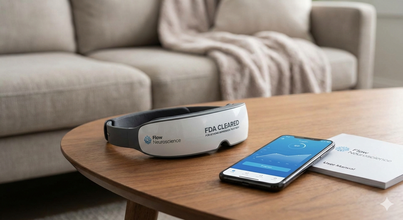- Health Conditions A-Z
- Health & Wellness
- Nutrition
- Fitness
- Health News
- Ayurveda
- Videos
- Medicine A-Z
- Parenting
Nutritional Shakes Causing Listeria Infection Have Been Recalled From The Shelves

(Credit-Canva)
FDA has recalled a range of milkshakes from sales as the link between the deaths and serious illnesses caused by it were confirmed. The 4 oz. packs of Lyons ReadyCare and Sysco Imperial Frozen Supplemental Shakes were taken off shelf as the dangerous consequences of consuming the drink were found, there are 11 confirmed deaths, 27 hospitalized and 34 people who have been infected as well with Listeria. This massive recall was a voluntary effort, FDA did not explain when this death took place but specified that the outbreak could be traced back seven years.
According to the Cleveland clinic, Listeria is a foodborne illness which is caused by L. monocytogenes. Lyons Magnus, the company that provides these shakes to many places, is taking the lead. They are pulling back all of their 4-ounce packs of two specific milkshake brands. This comes after their supplier, Prairie Farms, found the problem at their factory. It's like finding a bad apple in a big bag and then taking the whole bag away to be safe. The goal is to stop anyone else from drinking these contaminated shakes.
How Has This Impacted The Vulnerable Populations?
This outbreak is especially concerning because it has hit people who are already weak or sick. Many of those who got ill were living in places like nursing homes or were in hospitals. These places often serve these kinds of supplemental shakes to people who need extra nutrition. Sadly, many of the people who got sick were already dealing with other health problems, which made the Listeria infection even more dangerous. Records show that these milkshakes were being given to patients and residents, meaning they were readily available. The fact that so many vulnerable people were affected highlights the importance of very strict food safety, especially in places that care for those with health issues. The FDA was first alerted about this problem late last year, showing that this has been an ongoing issue.
Finding out where a food poisoning outbreak started is like being a detective. Companies like Lyons Magnus acted quickly when they learned about the Listeria. They stopped getting any more shakes from the factory where the problem was found. They also told all of their customers to get rid of any of the bad shakes. But health officials are also looking further back. They have found that this outbreak can be traced back to 2018. This means that the bacteria might have been in the food system for a long time. Investigators are now working to find out exactly how and where the food was contaminated all those years ago. This kind of investigation is important to prevent future outbreaks.
What Are The Risks And Symptoms Of Listeria?
Listeria is a type of bacteria that can make people very sick. If you eat food that has Listeria in it, you might not feel sick right away. It can take up to 10 weeks for symptoms to show up, but usually, it's about two weeks. The symptoms can include things like a fever, muscle aches, and feeling sick to your stomach. In serious cases, people can get confused, have a stiff neck, or even have seizures. Some people are more likely to get very sick from Listeria. These include pregnant women, older adults, and people whose immune systems are weak. Because of this, it is very important that these at risk groups of people avoid the recalled products. Also, this information reminds us that Listeria is a dangerous bacteria, that has caused other outbreaks from other food products.
Ozempic Launches In India At Rs 2,200 For Starter Dose: All You Need To Know

Credits: Canva
Danish drugmaker Novo Nordisk has officially introduced its widely known diabetes medication Ozempic in India, pricing the starter dose of 0.25 mg at ₹2,200 per week. According to a Reuters report, the injectable medicine will be available in three strengths in the country: 0.25 mg, 0.5 mg and 1 mg.
Ozempic is a once-weekly injectable prescribed for people living with type 2 diabetes.
Ozempic Price In India
The weekly injection received approval from the US Food and Drug Administration in 2017 for treating type 2 diabetes. Since then, it has grown into a global blockbuster and is also commonly prescribed off-label for weight loss because of its appetite-suppressing effects.
The lowest strength will cost ₹2,200 per week. Prices for the higher doses have also been announced, as per the Reuters report.
Here are the details:
- 1 mg dose: ₹11,175/month
- 0.5 mg dose: ₹10,170/month
- 0.25 mg dose: ₹8,800/month
All you need To know About Ozempic
India’s drug regulator, the Central Drugs Standard Control Organisation (CDSCO), approved Ozempic, also known as semaglutide, in October this year for adults with type 2 diabetes.
As per the US FDA, Ozempic is prescribed along with diet and exercise to improve blood sugar control in adults with type 2 diabetes mellitus. It is also indicated to reduce the risk of major cardiovascular events in adults with type 2 diabetes who already have heart disease.
As per NDTV Profit, currently, Wegovy is priced at Rs 2,712 per week for the 0.25 mg dose, while the 0.5 mg dose costs Rs 3,462 weekly. The 1 mg dose is also priced at Rs 3,462 per week, and the 1.7 mg dose is available at Rs 4,100 per week. Mounjaro (tirzepatide), a combination therapy of GLP-1 receptor agonist and GIP that helps improve blood sugar control in adults with type 2 diabetes when paired with a healthy diet and regular exercise, is priced at Rs 13,500 per month for the 2.5 mg dose.
How Does Ozempic Help In Weight Loss?
Ozempic mimics the action of a naturally occurring hormone called GLP-1. Here’s how it supports weight loss, as outlined in an earlier HT report.
- It boosts insulin release when blood sugar levels increase.
- It slows down the emptying of food from the stomach, helping people feel full for longer after meals.
- At higher doses, it can also curb appetite, which may aid weight management efforts.
Possible Side-Effects Of Ozempic
As previously reported by Mayo Clinic, some potential side-effects of Ozempic include:
- An increased risk of inflammation of the pancreas.
- Possible gallbladder-related problems.
- According to the FDA, the most commonly reported side effects, seen in at least 5 per cent of patients taking Ozempic, include nausea, vomiting, diarrhoea, abdominal pain and constipation.
This article is intended for informational purposes only and should not be taken as a replacement for professional medical advice.
Delhi Air Quality Hits ‘Severe,’ GRAP-3 Curbs Kick In: Full List Of Restrictions Explained

Credits: Canva
Anti-pollution measures under GRAP-3 came into force in Delhi on Saturday as air quality slipped into the “severe” bracket. By noon, the national capital reported an Air Quality Index of 405, according to figures released by the Central Pollution Control Board (CPCB). Earlier in the day, Delhi’s AQI hovered close to 390 during the morning hours.
Delhi Air Quality Hits ‘Severe'
Each winter, Delhi and the surrounding NCR (National Capital Region) bring in curbs under the Graded Response Action Plan, which divides air quality into four levels: Stage 1 (Poor, AQI 201–300), Stage 2 (Very Poor, AQI 301–400), Stage 3 (Severe, AQI 401–450) and Stage 4 (Severe Plus, AQI above 450).
Under GRAP-3, non-essential construction and demolition activities have been halted, along with stone crushing and mining operations. The measures also include restrictions on older diesel goods vehicles within Delhi. Schools up to Class 5 are required to move to a hybrid learning model, while offices across Delhi-NCR may function with only 50 per cent staff strength, as per Press Information Bureau.
Hazardous AQI levels have become a recurring feature across several parts of Delhi during the winter months. Quoting environmental experts, an IANS report linked the sharp decline in air quality to a mix of stagnant wind conditions, vehicle emissions, industrial pollution and seasonal factors such as crop residue burning in neighbouring states.
What Changed in GRAP?
The biggest shift under the updated GRAP framework is that stricter steps will now come into force earlier, instead of waiting for air quality to deteriorate further.
As per Press Information Bureau, under the revised system, measures that were earlier reserved for Stage 4 will now apply at Stage 3 itself. This means that once the AQI reaches the 301–400 range, public, municipal and private offices will function with only 50 percent staff. Central government offices will also move to work-from-home at this stage, rather than waiting for the AQI to cross 450.
In the same way, actions that earlier fell under Stage 3 have now been pushed to Stage 2. As a result, staggered timings for government offices will begin as soon as the AQI enters the 201–300 category.
Stage 2 measures have also been advanced to Stage 1. This brings uninterrupted power supply arrangements into effect earlier, at an AQI level of 101–200, to reduce the need for diesel generator use and limit additional emissions.
Delhi AQI: GRAP Stage 3 Restrictions Announced
In response to the worsening situation, the Delhi government confirmed that the Commission for Air Quality Management (CAQM) has activated all measures under Stage III of GRAP, which falls under the “Severe” air quality category with AQI levels between 401 and 450, across the entire NCR.
These Stage 3 curbs will apply in addition to the existing Stage I and Stage II measures. Authorities, including NCR Pollution Control Boards, have been instructed to step up enforcement to prevent further deterioration of air quality across the region.
- Ban on the transportation of construction materials such as sand and cement, particularly on non-paved roads
- Complete suspension of demolition and construction work unless unavoidable, including earthwork, piling and trenching
- Advisory for private firms to permit work-from-home or hybrid arrangements to reduce traffic-related pollution
- Restrictions on inter-state diesel buses entering or operating within Delhi
- Prohibition on BS-3 petrol and BS-4 diesel four-wheelers in Delhi and nearby NCR districts
- Shutdown of stone crushers, mining operations and hot-mix plants that do not run on clean fuel
- Ban on the use of diesel generator sets, except for emergency and essential services
GRAP III Imposed in Delhi-NCR: What’s Allowed
Even as Stage III of the Graded Response Action Plan comes into force, certain essential activities and services will continue to operate to minimise disruption to daily life.
- Essential infrastructure and public service projects permitted include:
- Metro, railway, airport, highway, defence, healthcare and sanitation-related projects
- Construction work linked to critical infrastructure, provided strict dust control and proper waste management norms are followed
- Vehicles used by persons with disabilities
- Recommended measures under GRAP III include:
- Greater use of public transport to reduce private vehicle emissions
- Hybrid or online classes for students up to Grade 5 to limit outdoor exposure and traffic movement
US FDA Approves First At-Home Device To Treat Depression – Here’s What You Need To Know

The U.S. Food and Drug Administration has cleared an at-home brain stimulation headset developed by Flow Neuroscience to help treat depression, giving patients another option beyond standard antidepressant drugs, which many people struggle to stay on because of long-term side effects, the company announced on Thursday.
Rates of depression in the U.S. have climbed sharply, rising by about 60% over the past ten years and now affecting more than 20 million adults, according to data from the Centers for Disease Control and Prevention.
FDA Approves First At-Home Brain Stimulation Device For Treatment of Depression
The US Food and Drug Administration (FDA) has approved a home-use brain stimulation device designed to treat major depressive disorder in adults. The device, known as FL-100 and made by Flow Neuroscience, is the first at-home treatment of its kind to receive approval in the United States.
The FDA’s decision was supported by results from the Empower phase 2 clinical trial, which found that 58% of participants reached remission after 10 weeks of treatment. Flow Neuroscience also reported that among users worldwide, 77% noticed an improvement in symptoms within three weeks. To date, more than 55,000 patients have used the device in regions including Europe, the UK, Switzerland, and Hong Kong.
Brain Stimulation Device For Depression: How Will The Headset Work?
The prescription device, called FL-100, uses transcranial direct current stimulation to send a mild electrical current to the brain’s prefrontal cortex, an area involved in mood control and stress response. According to Flow, this part of the brain is often less active in people living with depression, a condition that affects over 20 million adults across the U.S.
Flow noted that roughly one in three people with depression does not respond adequately to antidepressant medications, and many others discontinue them because of unwanted side effects.
“Flow’s FDA approval marks a turning point in depression care, representing the first real move away from medication-only treatment toward technology-based therapies with fewer side effects,” said Flow CEO Erin Lee in a statement.
During the study, participants wore the headset for 30 minutes per session while resting, beginning with five sessions a week for the first three weeks, then reducing to three sessions per week for the rest of the trial. The program also included live remote monitoring through video calls.
Researchers observed benefits in patients who were already taking antidepressants for treatment-resistant depression or receiving psychotherapy, as well as in those who were not using medication at all.
“Among people using Flow in real-world settings, 77% report feeling better in as little as three weeks,” said Kultar Garcha, M.D., chief medical officer at Flow. “A treatment that was once limited to clinics can now be used at home, offering a practical way to widen access to effective depression care.”
Flow said it plans to launch the headset commercially in the U.S. in the second quarter of next year and intends to explore its potential use for conditions such as traumatic brain injury, addiction, and sleep disorders.
“We want Flow to become part of the standard pathway for treating depression,” Lee said. “Our focus is clear: to help as many people as possible reach remission and regain their quality of life.”
© 2024 Bennett, Coleman & Company Limited

